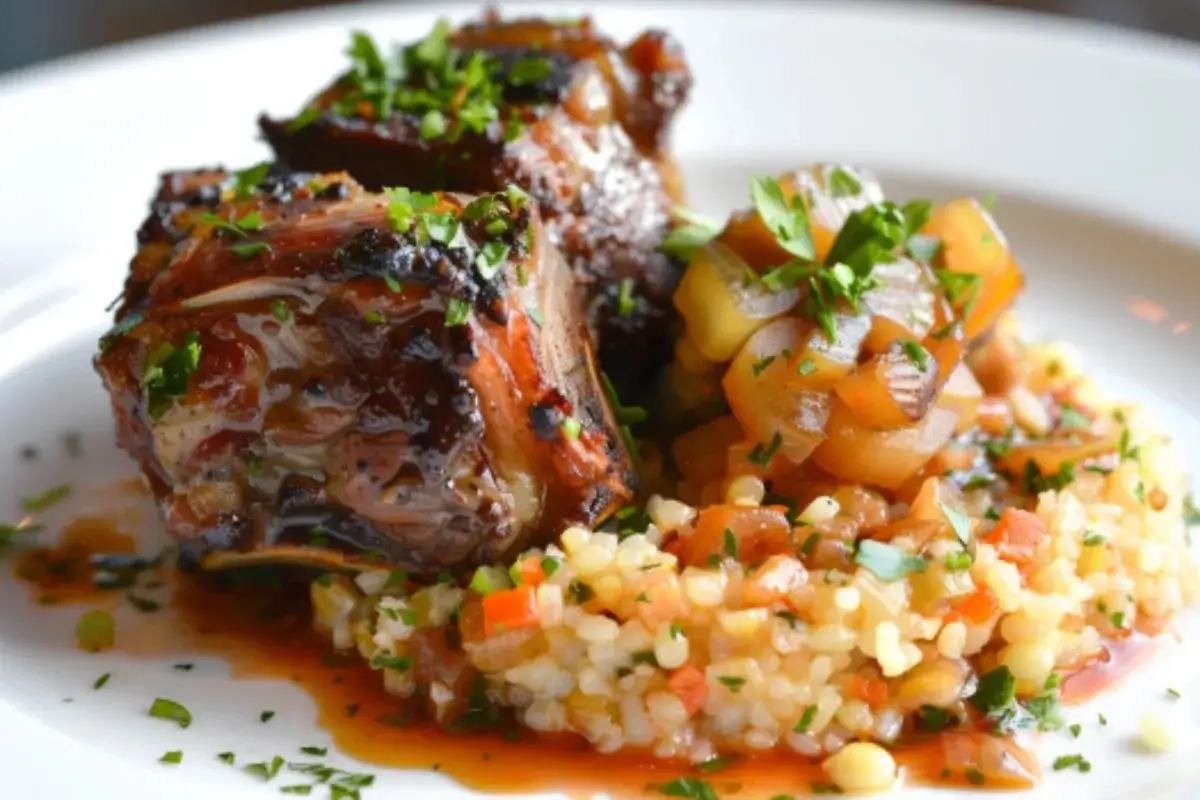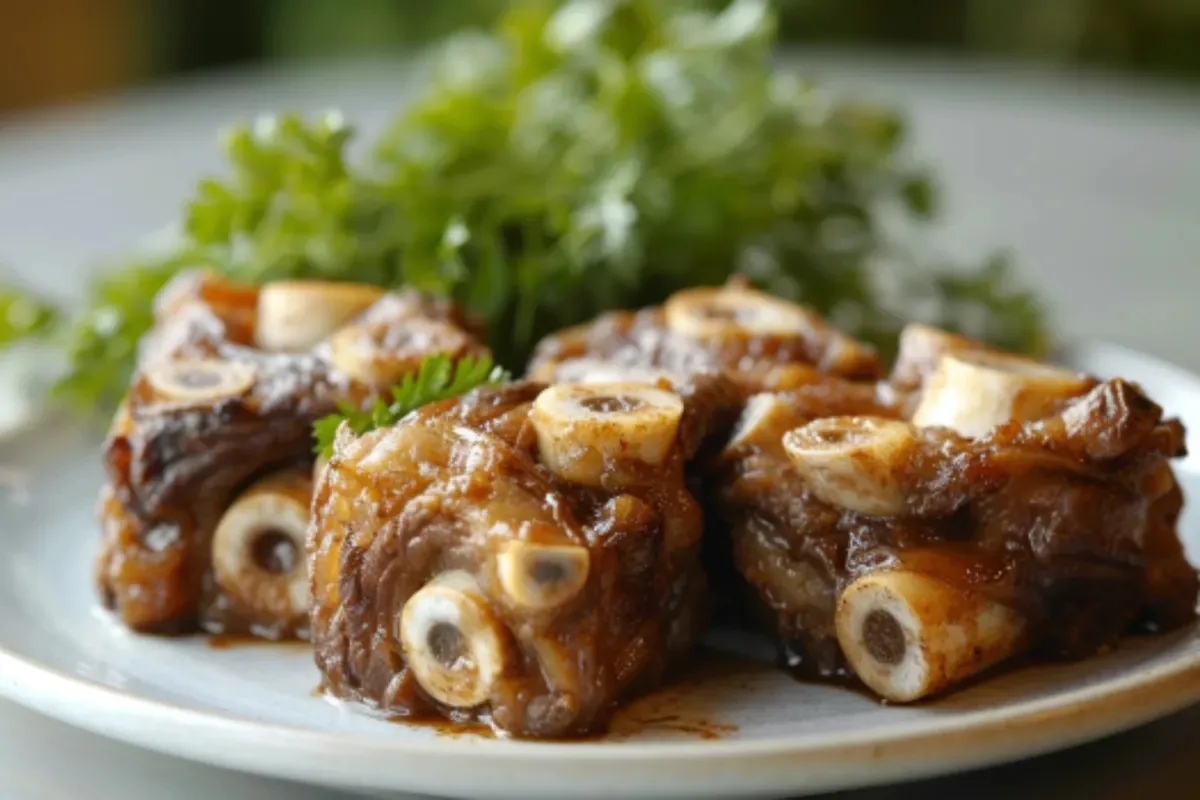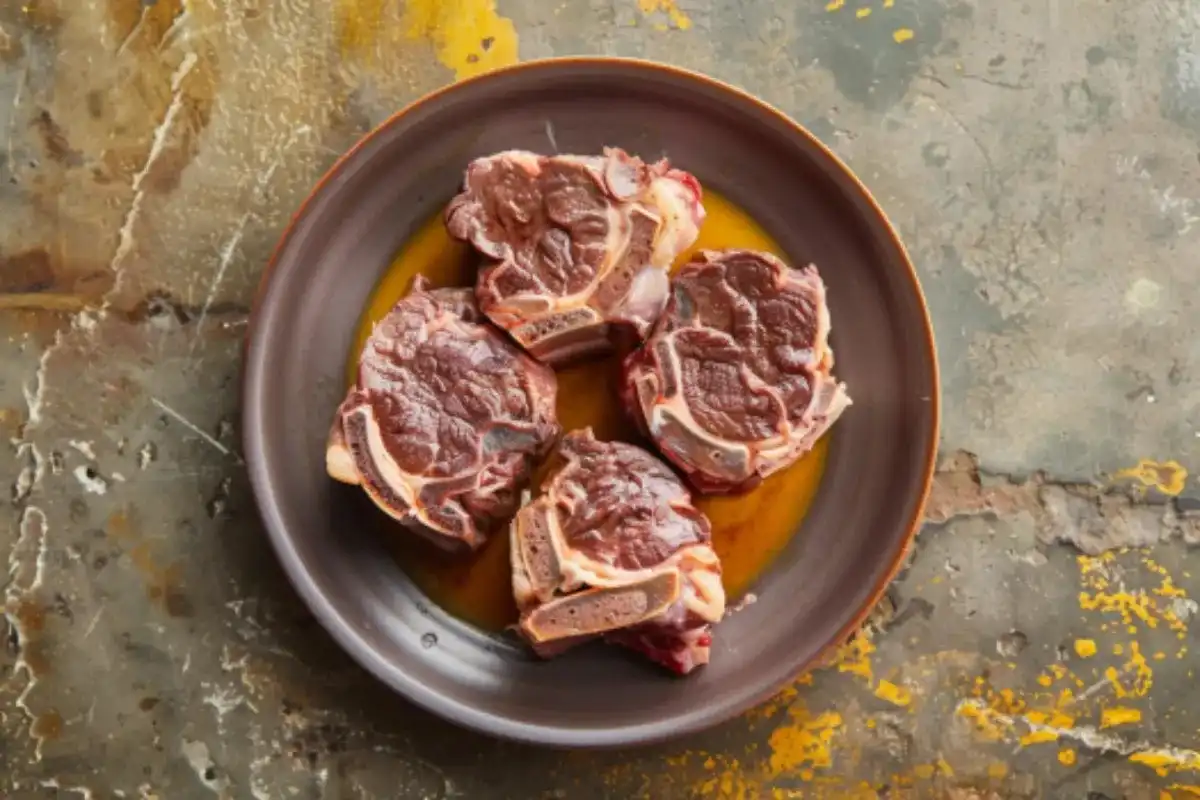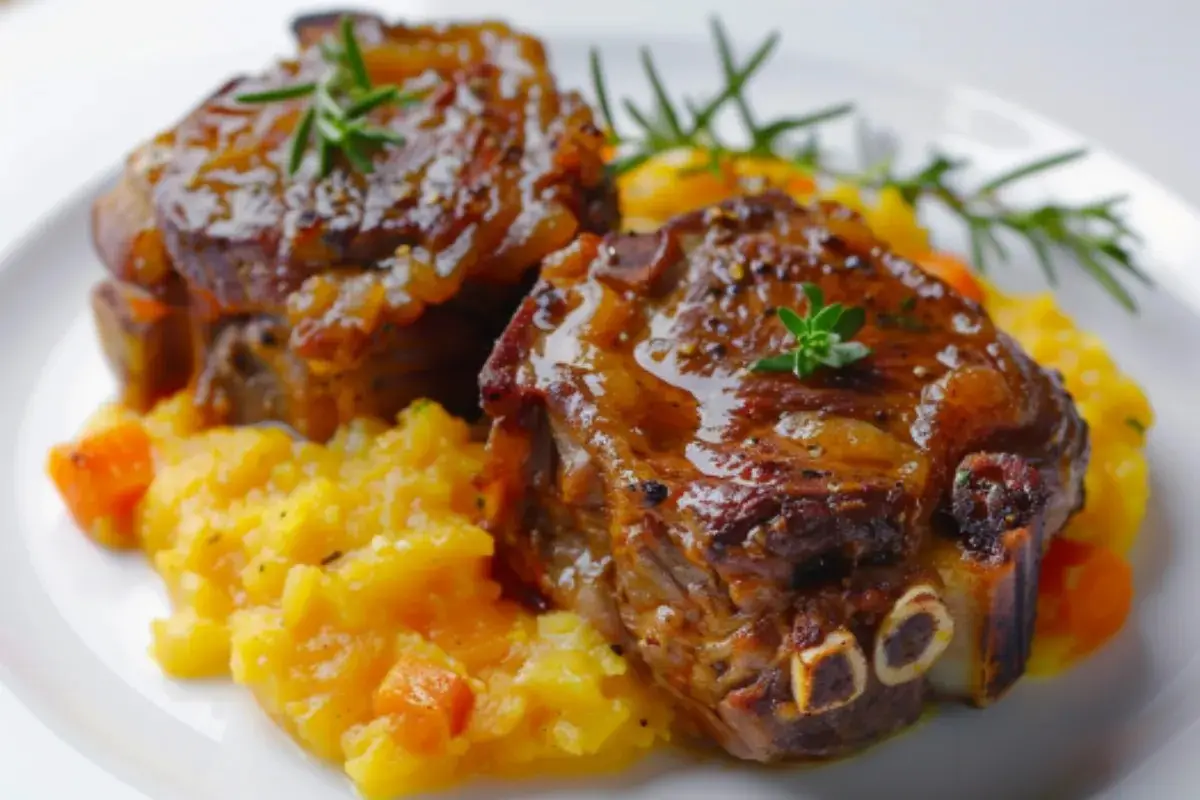Oxtail is a unique and flavorful cut of meat that, when prepared correctly, delivers an incredible culinary experience. Its rich flavor and texture are beloved by chefs and home cooks alike, making it a staple in various international cuisines. However, due to its naturally tough and gelatinous composition, tenderizing oxtail is essential to unlocking its full potential.
In this comprehensive guide, we will explore everything you need to know about tenderizing oxtail. We’ll dive into different methods that ensure you get melt-in-your-mouth meat every time, offering practical tips, detailed explanations, and recipes to help you make the most out of this underrated cut. From slow cooking to marination techniques, braising, and pressure cooking, you will learn the secrets to perfecting this ingredient. Let’s begin the journey to mastering oxtail.
Understanding Oxtail: Why Tenderization Is Key
Oxtail, as the name implies, comes from the tail of cattle. Once viewed as a humble cut of meat, often reserved for stews and soups, oxtail has gained popularity due to its intense flavor, versatility, and unique texture. However, oxtail is composed of bones, cartilage, and tough muscle fibers that require careful handling and long cooking times to become tender.
The Importance of Tenderizing Oxtail
Tenderization is crucial because of oxtail’s composition. It contains a significant amount of connective tissue and collagen, which can result in chewy, unpleasant meat if not properly broken down. When cooked slowly and at low temperatures, the collagen melts into gelatin, creating a luxurious, rich texture. This process allows the meat to become tender, flavorful, and perfectly balanced in taste. Achieving this texture is essential, as undercooked oxtail can be quite tough and not enjoyable to eat.
Now that we understand the basics of why oxtail needs tenderizing, let’s explore the various methods available for transforming this tough cut into a decadent meal.
The Best Methods for Tenderizing Oxtail

There are multiple ways to tenderize oxtail, depending on the equipment you have at your disposal and the time you can dedicate to the cooking process. Below are the most reliable methods, each offering different benefits and techniques to ensure a tender outcome.
Slow Cooking: The Classic Approach to Tenderizing Oxtail
Slow cooking is one of the most traditional and foolproof methods for tenderizing oxtail. The extended cooking time allows the connective tissues and collagen to break down, leaving the meat juicy and tender. Slow cooking also infuses the meat with the flavors of the accompanying ingredients, resulting in a deep, rich dish.
For a recipe on how to perfectly slow cook oxtail, check out this slow-cooked oxtail recipe.
Stove Top Method
One way to slow cook oxtail is on the stovetop. This method involves simmering the oxtail in liquid for several hours over low heat.
- Instructions: Start by browning the oxtail in a heavy-bottomed pot or Dutch oven. Browning adds flavor and helps seal in the juices. After browning, add your chosen liquid (broth, wine, or water), along with aromatics such as onions, garlic, carrots, and herbs. Cover the pot and allow the oxtail to simmer for 3-4 hours on low heat, stirring occasionally.
- Benefits: The stove top method allows for better control over the cooking process, as you can check the meat periodically to ensure it’s tenderizing properly. The consistent low heat ensures that the collagen breaks down slowly, which is essential for achieving the desired texture.
For more tips on slow cooking oxtail, check out this detailed guide to oxtail recipes.
Crockpot Method
Another popular slow-cooking method is using a crockpot (slow cooker). This method is convenient because it allows you to set the oxtail to cook and leave it for hours without needing to monitor it closely.
- Instructions: Brown the oxtail in a separate pan, then transfer it to the crockpot. Add liquid, herbs, and vegetables, and cook on low for 6-8 hours. The long cooking time ensures the oxtail becomes tender and falls off the bone.
- Benefits: The crockpot method is ideal for busy cooks who want to prepare oxtail but don’t have the time to supervise it. Once the oxtail is set in the crockpot, you can let it cook while you attend to other tasks.
Oven Slow Roasting
Slow roasting oxtail in the oven is another fantastic way to tenderize oxtail. This method is similar to braising but focuses more on using dry heat combined with moisture to create tender meat.
- Instructions: Preheat your oven to 275°F. In a roasting dish or Dutch oven, brown the oxtail on all sides. Once browned, add liquid (such as beef broth or red wine) and cover the dish tightly with foil or a lid. Roast in the oven for 3-4 hours, checking occasionally to ensure the liquid hasn’t evaporated.
- Benefits: The slow, even heat of the oven allows for a hands-off approach to tenderizing oxtail. The liquid helps to keep the meat moist while the low temperature ensures that the oxtail cooks evenly throughout.
You can explore more slow-cooking tips in this oxtail cooking guide.
Braising Oxtail for Maximum Tenderness

Braising is a cooking method that involves browning the meat first and then slow-cooking it in liquid. This method works exceptionally well for tough cuts of meat like oxtail because it helps infuse the meat with flavor while ensuring it becomes tender.
How to Braise Oxtail
- Step 1: Browning the Oxtail: Begin by searing the oxtail in a hot pan with oil until all sides are browned. Browning adds depth to the flavor and creates a beautiful crust on the outside of the meat.
- Step 2: Deglazing the Pan: After browning, deglaze the pan with a liquid of your choice—broth, wine, or tomato-based sauce works well. Scrape up any browned bits from the bottom of the pan to incorporate them into the sauce.
- Step 3: Slow-Cooking: Transfer the browned oxtail and liquid to a large pot or Dutch oven. Add vegetables, herbs, and seasonings, then cover the pot and cook on low heat for 2.5-3 hours. The liquid will slowly reduce, concentrating the flavors and tenderizing the meat.
Braising is a great way to ensure your oxtail remains moist and flavorful throughout the cooking process. You can read more about the art of braising here.
Pressure Cooking: Quick and Easy Tenderization
If you’re short on time but still want to achieve tender oxtail, pressure cooking is an excellent option. The high pressure in a pressure cooker helps break down the tough fibers and collagen in oxtail quickly, without sacrificing flavor.
Using a Pressure Cooker
- Instructions: Brown the oxtail in the pressure cooker on the sauté setting. Once browned, add your liquid and aromatics. Seal the pressure cooker and cook on high pressure for 45 minutes to 1 hour, depending on the size of the oxtail pieces. Once the time is up, let the pressure release naturally.
- Benefits: The pressure cooker is perfect for those days when you want tender oxtail but don’t have hours to dedicate to slow cooking. It locks in moisture and infuses the meat with flavor in a fraction of the time.
Marinating Oxtail for Tenderization
Marinating is another great method for tenderizing oxtail. A well-balanced marinade not only adds flavor but also helps break down the tough muscle fibers, making the oxtail more tender before it even hits the pan.
Crafting the Perfect Marinade
- Acidic Ingredients: Marinades typically include acidic ingredients such as vinegar, citrus juice, or wine. These acids work to break down the muscle fibers in the oxtail, helping to tenderize the meat.
- Duration: For the best results, marinate the oxtail for at least 4 hours, though overnight is ideal. Be careful not to marinate for too long, as overexposure to acidic ingredients can cause the meat to become mushy.
You can learn more about why marination and soaking oxtail before cooking enhances tenderness here.
Enzymatic Tenderizers: Papaya, Pineapple, and Commercial Tenderizers
Using enzymatic tenderizers is another method to quickly tenderize oxtail. Fruits such as papaya and pineapple contain natural enzymes papain and bromelain, respectively that help break down proteins in the meat.
How to Use Enzymatic Tenderizers
- Papaya and Pineapple: Simply rub the meat with crushed papaya or pineapple and let it sit for an hour before cooking. These enzymes will soften the oxtail, making it easier to cook.
- Commercial Tenderizers: You can also use store-bought enzymatic tenderizers that are designed for tough cuts of meat. Just sprinkle the tenderizer on the meat and let it sit for the recommended amount of time before cooking.
Caution with Enzymes
While enzymatic tenderizers work well, they can also alter the texture of the meat if left on for too long. It’s important to follow the instructions carefully to avoid overly soft or mushy meat.
Additional Techniques and Tips for Tenderizing Oxtail

In addition to the methods above, there are a few other techniques and tips that can help you achieve perfectly tender oxtail.
Resting Oxtail After Cooking
Once the oxtail is cooked, it’s important to let it rest before serving. Resting allows the juices to redistribute throughout the meat, making it more flavorful and moist.
- Resting Time: Allow the oxtail to rest for 10-15 minutes after cooking. Lightly tent the meat with foil to keep it warm while resting.
- Benefits: Resting helps the oxtail retain its juices, ensuring that every bite is tender and flavorful.
Common Mistakes to Avoid When Cooking Oxtail
Even with the best intentions, there are some common mistakes that can affect the outcome of your oxtail dish. Here’s how to avoid them:
- Overcooking or Undercooking: Oxtail requires a delicate balance of time and temperature. If it’s undercooked, the meat will be tough and chewy. If it’s overcooked, the meat can become dry and lose its flavor.
- Using Too High Heat: Oxtail is best cooked slowly over low heat. High heat can cause the meat to seize up, becoming tough and rubbery.
- Not Enough Liquid: Whether you’re braising, slow cooking, or pressure cooking, it’s important to use enough liquid to keep the meat moist throughout the cooking process.
You can avoid these common pitfalls by following this guide on preparing oxtail.
Frequently Asked Questions About Tenderizing Oxtail
1. What’s the Best Method for Tenderizing Oxtail?
- Slow cooking and braising are considered the best methods for tenderizing oxtail. They both involve cooking the meat at low temperatures for an extended period of time, which helps break down the collagen and connective tissues, resulting in tender, flavorful meat.
2. Can I Tenderize Oxtail Without a Pressure Cooker?
- Absolutely. While a pressure cooker can speed up the process, slow cooking and braising are both excellent methods that can be done with a traditional stovetop or oven. These methods take longer but produce incredibly tender results.
3. Should I Marinate Oxtail Before Cooking?
- Marinating oxtail is a great way to add flavor and tenderize the meat. Acidic marinades help break down the muscle fibers, resulting in more tender meat. Marinating for at least 4 hours (or overnight) is recommended for the best results.
4. Why Is My Oxtail Still Tough After Cooking?
- If your oxtail is still tough after hours of cooking, it’s likely that it hasn’t cooked long enough at a low enough temperature. Oxtail requires patience; it needs to cook slowly to break down the tough collagen and connective tissues.
5. Can I Use Commercial Tenderizers on Oxtail?
- Yes, commercial tenderizers can be effective on oxtail. These products usually contain enzymes that help break down proteins in the meat, making it more tender. Just be sure to follow the instructions to avoid over-tenderizing the meat.
Conclusion
Cooking oxtail to perfection requires patience and the right techniques, but the results are worth the effort. By using methods like slow cooking, braising, and pressure cooking, you can transform this tough cut into a tender, flavorful masterpiece. Whether you prefer marinating or using enzymatic tenderizers, each method has its own unique advantages that will enhance your dish.
With the knowledge and techniques shared in this guide, you’re now ready to confidently cook oxtail and impress your guests with a rich, flavorful meal. Whether it’s a traditional stew, braised oxtail, or an innovative take on a classic recipe, your tender oxtail dishes will be the highlight of any meal.
For more tips on slow cooking and braising oxtail, be sure to explore additional resources and recipes in the ultimate oxtail recipe guide.

